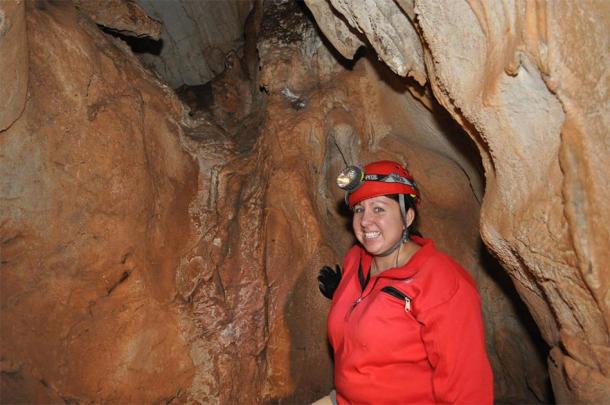Climate researchers exploring the molecular-structure of stalagmites discovered in Laos caves have married their observations with models of the Sahara drying up 4,000 years ago to show the catastrophic global effects of climate change. Their results have demonstrated the fallout caused by this vast swathe of planet Earth turning from lush grassland to a barren desert.
Ancient Culture-Changing Southeast Asian Megadrought
The name “Sahara” is derived from the Arabic word for “desert” ( ṣaḥra) and today the African Sahara Desert covers an area of 9,200,000 square kilometers (3,552,139 sq mi), representing the largest hot desert and the third largest desert in the world, after Antarctica and the Arctic. Now, a team of U.S. scientists have published a new study in the journal Nature Communications presenting their research about the effects of Saharan Africa changing from grassland to a barren desert about 4,000 years ago. This event caused a rise in airborne dust that cooled the Indian Ocean and affected global air circulation patterns, sparking a Southeast Asian megadrought that went on to reshape culture in the area for the next 1,000 years.
The era before changing world weather patterns caused the entire region to dry up is known to climatologists as the Green Sahara, or the African humid period (AHP), a time northern Africa was much wetter than it is today. In a Eureka Alert article some of the effects of the climate changes during the AHP are listed, including: “the end of Mesopotamia’s Akkadian Empire, the de-urbanization of the Indus Civilization and the emergence of pastoralism by the Nile.”

Kathleen Johnson collecting stalagmite samples from caves in Northern Laos to create a paleoclimate record for the study. (Amy Ellsworth / Eureka Alert )
What Is the Link Between Stalagmites in Laos and the African Sahara Desert?
The University of California team discovered evidence of the megadrought on stalagmites found in caves in the mountainous terrain of Northern Laos in Southeast Asia. The scientists say these show the desertification of the Sahara and the “missing millennia in inner Southeast Asia’s archaeological record.” The mass human migration which occurred in response to this changing climate might have inspired the development of new, and more resilient, subsistence and survival strategies, according to earth scientist Kathleen Johnson of the University of California, Irvine. Johnson also explains that these extreme climate circumstances may even have led to the “inception of Neolithic farming in mainland Southeast Asia.”
As part of their new study, Professor Johnson and colleagues analyzed trace metals, as well as oxygen and carbon isotope levels, gathered from the Laos stalagmites samples. They combined their data with climate model simulations of past environments to establish the condition that matched the evidence on the cave rocks.
According to their paper, this line of research allowed for the exploration of the long-range impact of drying in Africa, including “atmosphere–ocean feedbacks of varying levels of Saharan vegetation and dust concentrations.” The cooling of the Indian Ocean, caused by increased airborne dust, in turn acted to shift eastward the Walker circulation pattern, which currently crosses the equatorial Pacific. These consequences caused similar climate effects as today’s El Niño events, and in turn led to a quick reduction in monsoon-related moisture across the area for 1,000 years in what has been termed the Southeast Asian megadrought .
Outstanding New Evidence Is a Game Changer
The new research presents what a Daily Mail article calls “outstanding evidence” for how different forms of climate can change the plant and animal options of ancient societies, explains one of the articles authors, anthropologist Joyce White of the University of Pennsylvania. White adds that from an archaeological point of view, this really is “a game changer in how we try to understand or reconstruct the middle Holocene period .”
In conclusion, the U.S. researchers claim to have provided the academic community with “the first proof for a strong link between the end of the Green Sahara and Southeast Asian monsoon failure during the mid- to late Holocene period.” This paper reminds us that while we like to think we are in control of our destinies, fates and outcomes, we must be mindful that Mother Nature dances her own dance. When she does so, the entire structure of an advancing civilization can be pushed back into the Stone Age, in what is a mere heartbeat for the greater the cycles of nature.
Top image: A new study has found links between the end of the Green Sahara, the era when the Sahara Desert was lush and green, and the Southeast Asian megadrought that lasted a millennium. Source: Galyna Andrushko / Adobe Stock
By Ashley Cowie
Related posts:
Views: 2
 RSS Feed
RSS Feed

















 August 24th, 2020
August 24th, 2020  Awake Goy
Awake Goy  Posted in
Posted in  Tags:
Tags: 
















